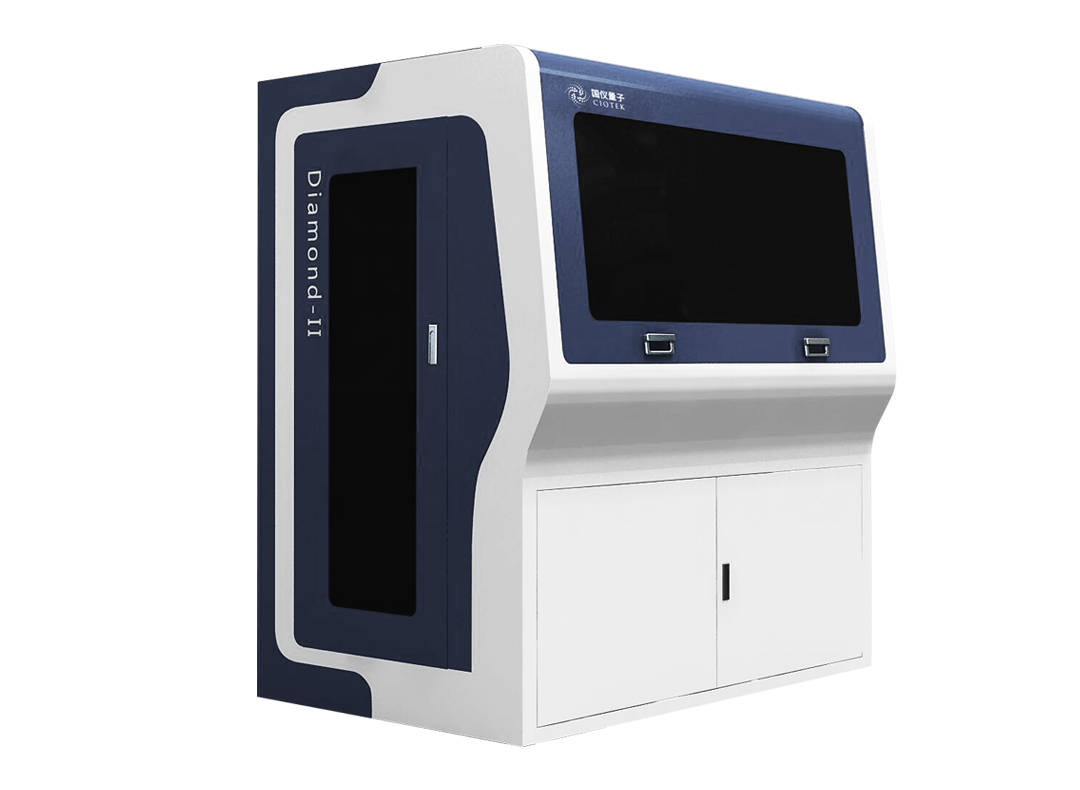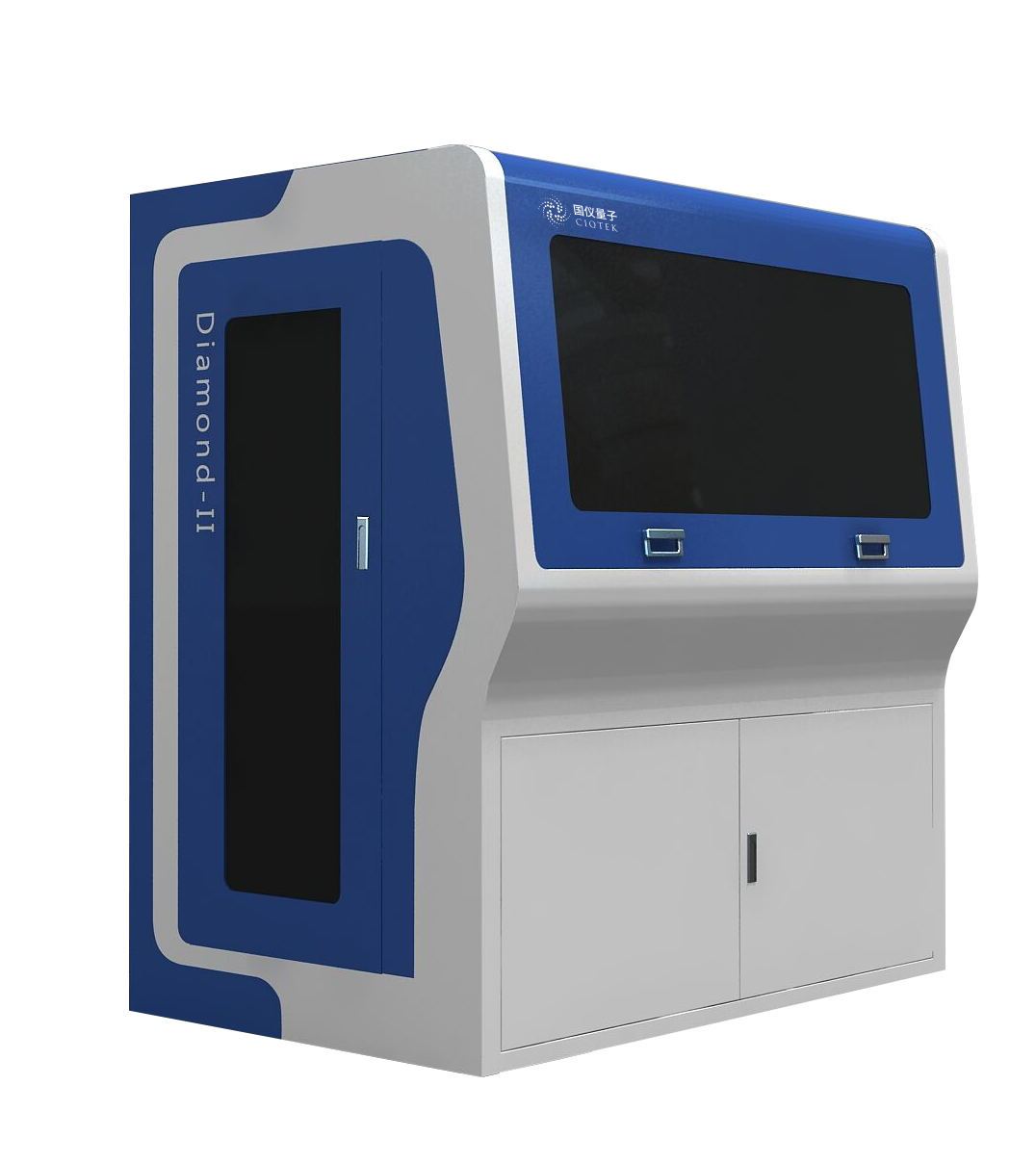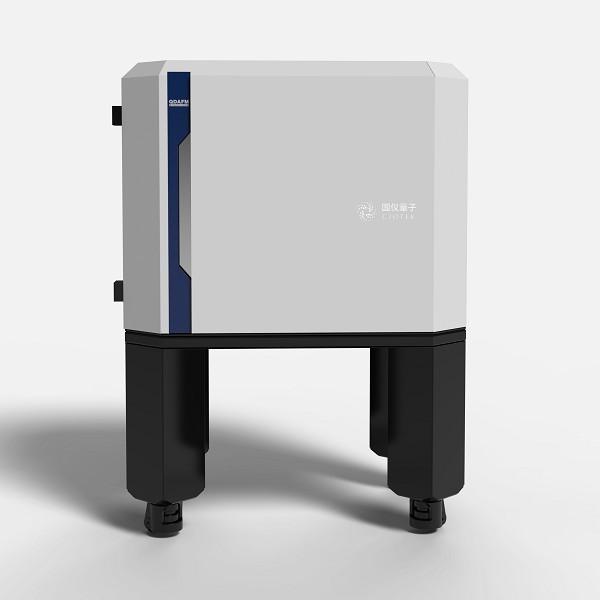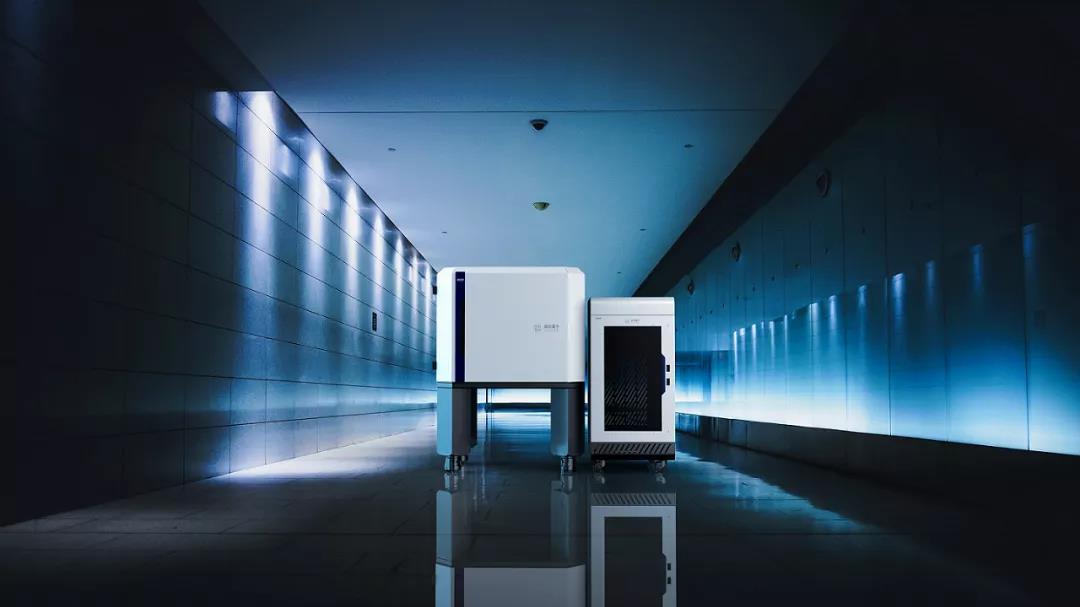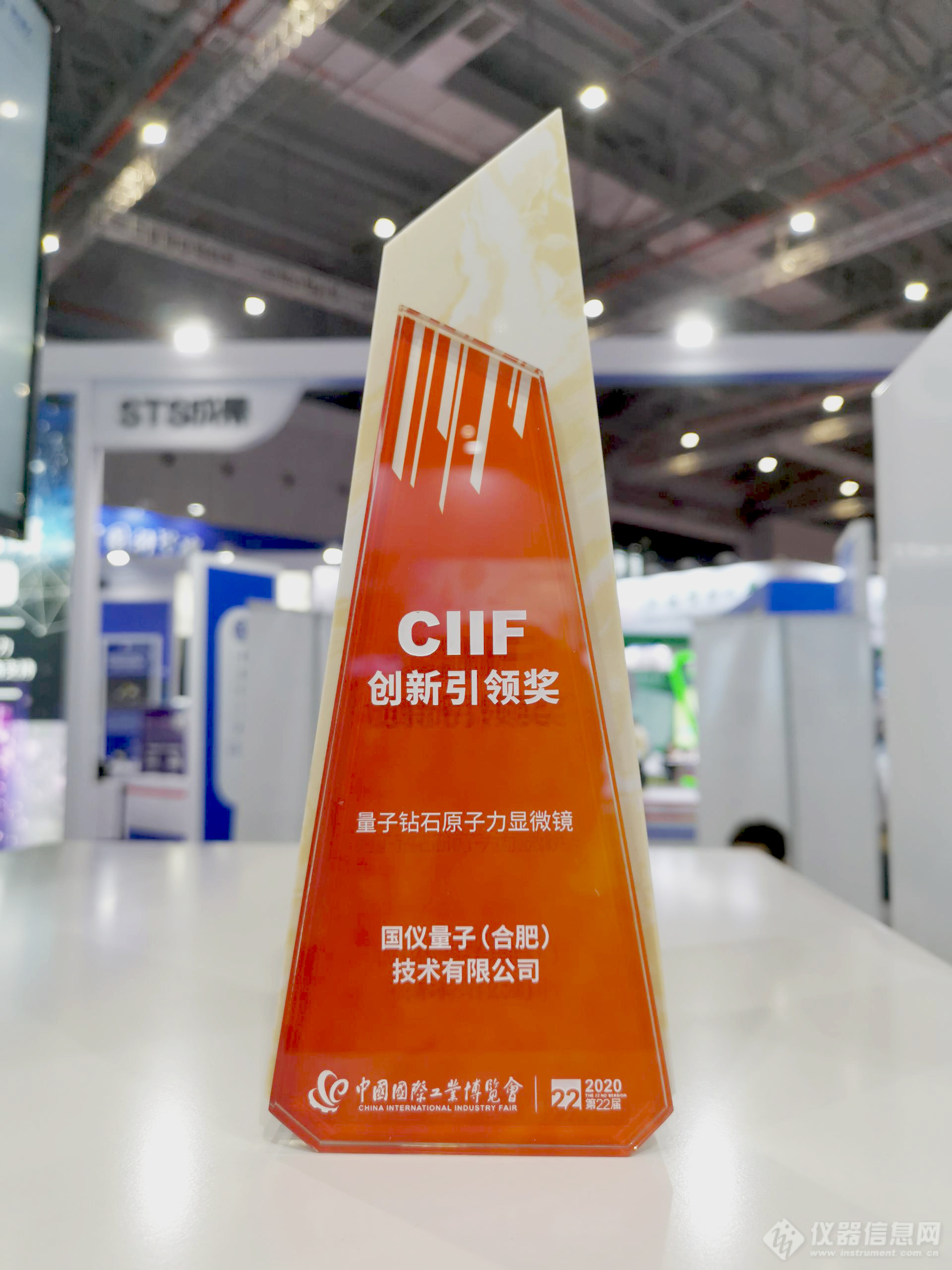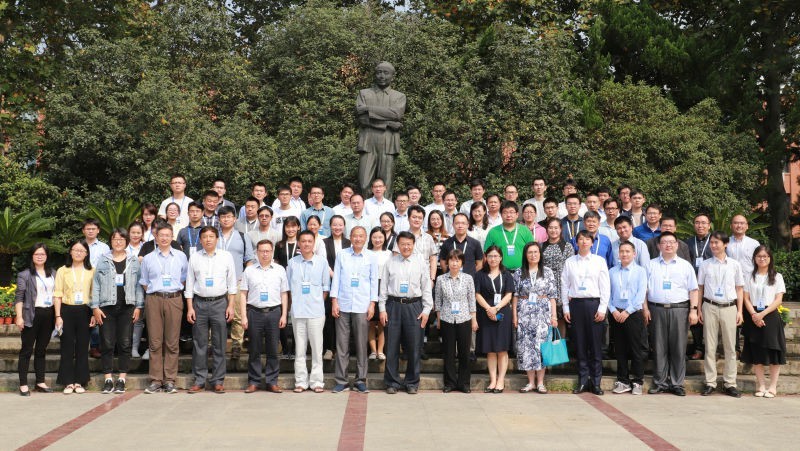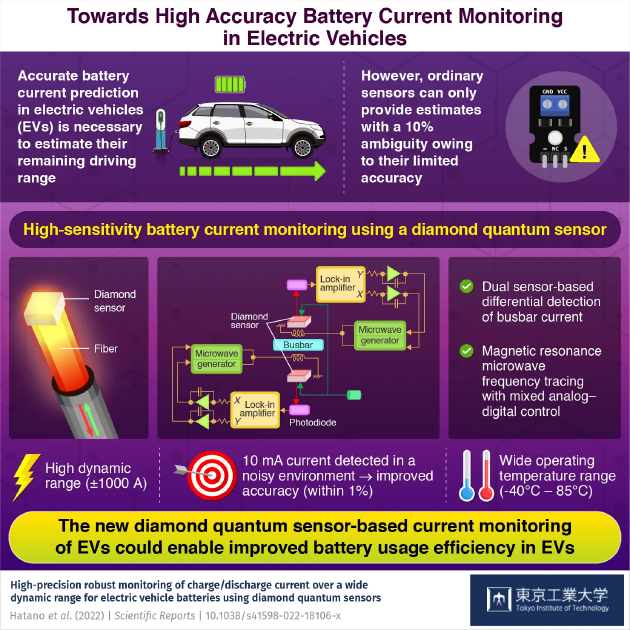量子钻石单自旋谱仪技术及应用综述
p style=" text-align: justify " span style=" text-align: center " 单量子态的探测 /span span style=" text-align: center " 与 /span span style=" text-align: center " 调控 /span span style=" text-align: center " 及分子尺度的成像技术是精密谱学仪器发展的重要方向。随着对磁探测技术的深入探索,国仪量子公司生产研发的量子钻石单自旋谱仪,基于掺杂金刚石中的氮-空位体系的谱学技术,具有超高的磁探测本领,在物理、化学、生物、材料、医学等不同的学科具有广泛而重要的应用前景 /span sup style=" text-align: center " [1-11] /sup span style=" text-align: center " 。 /span /p p style=" text-align: center" img style=" max-width: 100% max-height: 100% width: 500px height: 355px " src=" https://img1.17img.cn/17img/images/201911/uepic/725600d0-5eee-420d-a2d4-fb3d0cc6a79e.jpg" title=" 微信图片_20191128151302.png" alt=" 微信图片_20191128151302.png" width=" 500" height=" 355" border=" 0" vspace=" 0" / /p p style=" text-align: center " strong 图1 各种测磁技术的指标对比 /strong /p p style=" text-align: justify " 自旋磁共振技术是目前为止发展最为成熟、应用最广泛的传统技术之一。磁探测相关谱仪具有悠久的发展历史,而实现磁共振探测也具有不同的方法,并且有各自的优缺点。图1直观的展示了霍尔传感器、SQUID探测器和自旋磁共振等几种通用技术手段在灵敏度和分辨率上的分布 sup [12] /sup ,相较传统的测磁技术,基于金刚石的磁共振方法在这两个核心指标上都有较大的提升,这为我们研发量子钻石单自旋谱仪提供了有力参考。 /p p style=" text-align: justify " 20世纪50年代,霍尔传感器已经在实验室磁场测量中普遍使用,这类探测器是基于霍尔效应对外界磁场直接测量 sup [13] /sup 。当磁场方向与回路中电流方向不同时,由于洛伦兹力的作用,导体内的电子发生偏转而产生电势差,通过电势差来直接测量磁场大小。磁场探头主要有由半导体晶体组成,能够被制成单片集成电路,抗震性好,易于使用,但是精度不够。 /p p style=" text-align: justify " 超导量子干涉仪(SQUID)是基于约瑟夫森结的磁通传感器 sup [14] /sup ,利用约瑟夫森结两端的电压随闭合环路中外界磁通量的变化,可以测量微弱的磁信号。20世纪60年代,Robert 等人研制成功了SQUID。此类测磁技术磁探测灵敏度较高,但是仪器需要在低温环境下工作,且价格昂贵。 /p p style=" text-align: justify " 基于钻石体系的微观磁探测是新兴的磁共振探测方法。该技术结合了光探测磁共振技术(ODMR)和金刚石中氮-空位(NV)色心的点缺陷,其工作原理是将NV色心制备成量子干涉仪,利用双共振技术实现高灵敏高空间分辨的磁信号探测。这种技术不需要低温及高真空极端化学条件下就可以正常工作,相比前面几种测磁技术,其具有更高的商业应用价值。 /p p style=" text-align: justify " 对磁场进行高分辨率、高灵敏度的测量在工程技术领域有着重要的价值。当前已有的探测手段已经不能满足微观磁共振对高分辨率、高灵敏度技术发展的需要,例如在微观尺度的成像方面,原子力显微镜(AFM)和扫描隧道显微镜(STM)等技术空间分辨率和探针尺寸相当,因此,要实现高空间分辨率,单原子是最佳的选择,而利用量子干涉仪,将弱磁信号转化成相位,可以实现高灵敏度的磁信号探测。 /p p style=" text-align: justify " 根据文献报道,NV色心单自旋体系空间分辨率可达5 nm以下 sup [15] /sup ,测磁灵敏度最高能达到 img src=" https://img1.17img.cn/17img/images/201911/uepic/b52f8ecb-6013-43a0-8446-a5fe7839d92e.jpg" title=" 微信图片_20191128144820.png" alt=" 微信图片_20191128144820.png" width=" 66" height=" 24" border=" 0" vspace=" 0" style=" text-align: center max-width: 100% max-height: 100% width: 66px height: 24px " / sup style=" text-align: center " [16] /sup span style=" text-align: center " ,这使得NV色心体系成为高分辨磁探测的有力候选者。由于金刚石NV色心室温下相干时间可以长达ms量级,可以被定位至小于10 nm的精度,电子自旋对外界磁场非常灵敏,以及NV色心与样品之间距离可以小于5nm等优点,因此,NV色心可以做成一种非常强大的单量子传感器。 /span /p p style=" text-align: justify " NV色心具有多电子态能级结构 sup [17] /sup ,处于激发态能级的NV色心有两个竞争的退激发路径:自发辐射跃迁回到基态及系间穿越弛豫到基态。而这两条反应路径的发生概率取决于NV色心基态的自旋状态,因此可以通过收集荧光信号读出自旋态m sub s /sub = 0的概率,并且通过光共振激发能够对NV色心进行初始化。更为重要的是,当电子自旋处在叠加态时,在外界磁场下的动力学演化会积累相对相位,如此便将收集的荧光信号和磁场大小关联起来。 /p p style=" text-align: justify " 2008年,Lukin研究组和Wrachtrup研究组几乎同时发现了NV色心具有优良的磁场感应能力,提出NV色心体系可用于高分辨率高灵敏度的磁测量 sup [18-19] /sup 。2012年,Wrachtrup 等人实验验证了单核自旋探测的原理性 sup [20] /sup 。2013年,文献报道了利用金刚石NV色心作为探针对有机样品质子探测,实现了5 nm的微观核磁共振 sup [21] /sup 。因此,金刚石NV色心单自旋体系在传感和探测的应用逐渐发展来,作为磁探测史上的新兴技术具有现实可行性,研制相关的谱学仪器迫在眉睫。 /p p style=" text-align: justify " img style=" max-width: 100% max-height: 100% width: 600px height: 396px " src=" https://img1.17img.cn/17img/images/201911/uepic/55ebdb4f-651f-44ed-8124-c24c35fa1570.jpg" title=" 微信图片_20191128143746.png" alt=" 微信图片_20191128143746.png" width=" 600" height=" 396" border=" 0" vspace=" 0" / /p p style=" text-align: center " strong 图2 商业化仪器现状 /strong /p p style=" text-align: justify " 图2所示,市场上全球领先的技术公司,像布鲁克、西门子、飞利浦等研发生产的相关磁共振产品均基于传统磁共振技术,例如NMR(核磁共振)、EPR(电子顺磁共振)、MRI (核共振成像)等磁共振谱仪。然而,基于钻石NV单自旋体系为原理的磁共振谱仪,市场上还未有商业化仪器出现。 /p p style=" text-align: center" img style=" max-width: 100% max-height: 100% width: 400px height: 292px " src=" https://img1.17img.cn/17img/images/201911/uepic/b08c92c0-2b61-46eb-a956-fa8a45c29f38.jpg" title=" 微信图片_20191128153605.png" alt=" 微信图片_20191128153605.png" width=" 400" height=" 292" border=" 0" vspace=" 0" / /p p style=" text-align: center " strong 图3 量子钻石单自旋谱仪实物图 /strong /p p style=" text-align: justify " 目前,国仪量子已掌握基于NV体系的核心技术,并具备成熟的制造工艺,成功研制了量子钻石单自旋谱仪,谱仪实物图外貌如图3所示。该谱仪通过控制光、电、磁等基本物理量,利用ODMR技术实现对钻石中氮—空位(NV色心)发光缺陷的自旋进行量子操控与读出,与传统顺磁共振、核磁共振相比,谱仪具有以下特点: /p p style=" text-align: justify " 1. 初态是量子纯态,易于初始化、操控和读出 NV色心的基电子自旋态可以通过光跃迁进行量子态的初始化和读出,利用微波进行量子态的操控。 /p p style=" text-align: justify " 2. 自旋量子相干时间长,长相干时间能够保证较长的相干操控及光信号积累。 /p p style=" text-align: justify " 3. 超高灵敏度与超高分辨率 由于NV色心的光学性质及其电子波函数特性,制备的单量子干涉仪测量磁场灵敏度可达10 sup -9 /sup T量级,NV色心系综甚至达到了10 sup -13 /sup T量级,其磁场测量空间分辨率可达到亚纳米。 /p p style=" text-align: justify " 4. 可以在室温大气条件下运行,对于生物样品有良好的兼容性。 /p p style=" text-align: justify " 5. 具备高保真度量子自旋态调控技术,通过自主研发的50 ps时间精度脉冲发生器以及宽带高功率微波调制器件,能够实现对自旋低噪声、高效、快速的量子相干操控。图4为装置拓扑图,谱仪配套了高智能化控制与信号采集软件,能够实现自动光路调节、自动磁场调节以及长时间的无人值守自动测样实验。 /p p style=" text-align: center" img style=" max-width: 100% max-height: 100% width: 500px height: 321px " src=" https://img1.17img.cn/17img/images/201911/uepic/6186f9ed-0f30-44b0-94bc-2c7f5e4d919d.jpg" title=" 微信图片_20191128143903.png" alt=" 微信图片_20191128143903.png" width=" 500" height=" 321" border=" 0" vspace=" 0" / /p p style=" text-align: center " strong 图4 仪器系统架构示意图 /strong /p p style=" text-align: justify " 国仪量子研发团队同时具有完善的高品质金刚石探针制备工艺,可以自主制备长相干时间、高稳定度的金刚石探针,能够达到比同类产品更高的技术指标。 /p p style=" text-align: justify " 基于以上NV固态体系的各种优势,此技术已在量子计算、磁探测、电探测及生物探测有较为成熟的应用。在量子计算领域,NV色心可以作为非常好的量子信息存储和调控的室温固体单自旋材料 sup [1-5] /sup 。例如利用NV色心体系,演示了D-J算法,大数分解算法等,为计算效率的提高带来极大帮助。在精密测量领域,基于金刚石氮-空位色心的精密测量技术,能够实现对电场、磁场、温度、应力等物理量的精密测量,并且赋能于科研、教育、能源、安全、健康、工业等各行各业。例如在生物医学领域,对活体细胞磁场 sup [6] /sup 、温度探测 sup [7] /sup ,以及对神经单元电位探测 sup [8] /sup 等 在材料科学领域,利用ODMR技术实现对不同材料光学性质和几何结构的研究 sup [9-11] /sup 。 /p p style=" text-align: justify " 金刚石NV色心为核心的量子钻石单自旋谱仪在磁探测领域崭露头角,满足未来磁共振成像对高分辨率高灵敏度的商业化需求。随着微纳加工技术的发展、谱仪性能的进一步提升,越来越多学科交叉领域的相关应用得到深入挖掘。相信不久的未来NV色心的量子精密测量技术将在国内外得到大范围的推广,前景令人期待。 /p p strong 参考文献: /strong /p p style=" margin-top: 5px margin-bottom: 5px text-align: justify " span style=" font-size: 12px " [1] Rong, X., J. Geng, F. Shi, Y. Liu, K. Xu, W. Ma, F. Kong, Z. Jiang, Y. Wu and J. Du (2015). & quot Experimental fault-tolerant universal quantum gates with solid-state spins under ambient conditions.& quot Nature Communications 6. /span /p p style=" margin-top: 5px margin-bottom: 5px text-align: justify " span style=" font-size: 12px " [2] Waldherr, Gerald, et al. & quot Quantum error correction in a solid-state hybrid spin register.& quot Nature 506.7487 (2014): 204. /span /p p style=" margin-top: 5px margin-bottom: 5px text-align: justify " span style=" font-size: 12px " [3] Xu, Kebiao, et al. & quot Experimental adiabatic quantum factorization under ambient conditions based on a solid-state single spin system.& quot Physical review letters 118.13 (2017): 130504. /span /p p style=" margin-top: 5px margin-bottom: 5px text-align: justify " span style=" font-size: 12px " [4] Lai, Y.-Y., G.-D. Lin, J. Twamley and H.-S. Goan (2018). & quot Single-nitrogen-vacancy-center quantum memory for a superconducting flux qubit mediated by a ferromagnet.& quot Physical Review A 97(5). /span /p p style=" margin-top: 5px margin-bottom: 5px text-align: justify " span style=" font-size: 12px " [5] Jelezko F, Wrachtrup J. 2006. Single defect centres in diamond: a review. Phys. Stat. Solidus A 203: 3207 – 25. /span /p p style=" margin-top: 5px margin-bottom: 5px text-align: justify " span style=" font-size: 12px " [6] Le Sage, David, et al. & quot Optical magnetic imaging of living cells.& quot Nature 496.7446 (2013): 486. /span /p p style=" margin-top: 5px margin-bottom: 5px text-align: justify " span style=" font-size: 12px " [7] Kucsko, Georg, et al. & quot Nanometre-scale thermometry in a living cell.& quot Nature 500.7460 (2013): 54. /span /p p style=" margin-top: 5px margin-bottom: 5px text-align: justify " span style=" font-size: 12px " [8] Barry, John F., et al. & quot Optical magnetic detection of single-neuron action potentials using quantum defects in diamond.& quot Proceedings of the National Academy of Sciences 113.49 (2016): 14133-14138. /span /p p style=" margin-top: 5px margin-bottom: 5px text-align: justify " span style=" font-size: 12px " [9] Chen, W. M. M. (2000). & quot Applications of optically detected magnetic resonance in semiconductor layered structures.& quot Thin Solid Films 364(1-2): 45-52. /span /p p style=" margin-top: 5px margin-bottom: 5px text-align: justify " span style=" font-size: 12px " [10] Koehl, W. F., B. Diler, S. J. Whiteley, A. Bourassa, N. T. Son, E. Janzen and D. D. Awschalom (2017). & quot Resonant optical spectroscopy and coherent control of Cr4+ spin ensembles in SiC and GaN.& quot Physical Review B 95(3): 8. /span /p p style=" margin-top: 5px margin-bottom: 5px text-align: justify " span style=" font-size: 12px " [11] Soltamov, V. A., I. V. Ilyin, A. S. Gurin, D. O. Tolmachev, N. G. Romanov, E. N. Mokhov, G. V. Mamin, S. B. Orlinskii and P. G. Baranov (2013). EPR and ODMR defect control in AlN bulk crystals. Physica Status Solidi C: Current Topics in Solid State Physics, Vol 10, No 3. A. Toropov and S. Ivanov. 10: 449-452. /span /p p style=" margin-top: 5px margin-bottom: 5px text-align: justify " span style=" font-size: 12px " [12] Degen, C., NANOSCALE MAGNETOMETRY Microscopy with single spins. Nat. Nanotechnol. 2008, 3 (11), 643-644. /span /p p style=" margin-top: 5px margin-bottom: 5px text-align: justify " span style=" font-size: 12px " [13] E.H.Hall.On a New Action of the Magnet on Electric Currents.American Journal of Mathematics 2, 287-292(1879). /span /p p style=" margin-top: 5px margin-bottom: 5px text-align: justify " span style=" font-size: 12px " [14] Drung, D. Assmann, C. Beyer, J. Kirste, A. Peters, M. Ruede, F. Schurig, T., Highly sensitive and easy-to-use SQUID sensors. Ieee Transactions on Applied Superconductivity 2007, 17 (2), 699-704. /span /p p style=" margin-top: 5px margin-bottom: 5px text-align: justify " span style=" font-size: 12px " [15] Staudacher, T., et al. (2013). & quot Nuclear Magnetic Resonance Spectroscopy on a (5-Nanometer)(3) Sample Volume.& quot Science 339(6119): 561-563. /span /p p style=" margin-top: 5px margin-bottom: 5px text-align: justify " span style=" font-size: 12px " [16] Balasubramanian, S., et al. (2009). & quot Non Cell-Autonomous Reprogramming of Adult Ocular Progenitors: Generation of Pluripotent Stem Cells Without Exogenous Transcription Factors.& quot Stem Cells 27(12): 3053-3062. /span /p p style=" margin-top: 5px margin-bottom: 5px text-align: justify " span style=" font-size: 12px " [17] Peng, S. Liu, Y. Ma, W. Shi, F. Du, J., High-resolution magnetometry based on nitrogen-vacancy centers in diamond. Acta Physica Sinica 2018, 67 (16). /span /p p style=" margin-top: 5px margin-bottom: 5px text-align: justify " span style=" font-size: 12px " [18] Maze, J. R., et al. (2008). & quot Nanoscale magnetic sensing with an individual electronic spin in diamond.& quot Nature 455(7213): 644-U641. /span /p p style=" margin-top: 5px margin-bottom: 5px text-align: justify " span style=" font-size: 12px " [19] Bentley, D. R., et al. (2008). & quot Accurate whole human genome sequencing using reversible terminator chemistry.& quot Nature 456(7218): 53-59. /span /p p style=" margin-top: 5px margin-bottom: 5px text-align: justify " span style=" font-size: 12px " [20] Zhao, N., et al. (2012). & quot Sensing single remote nuclear spins.& quot Nature Nanotechnology 7(10): 657-662. /span /p p style=" margin-top: 5px margin-bottom: 5px text-align: justify " span style=" font-size: 12px " [21] Mamin, H. J., et al. (2013). & quot Nanoscale Nuclear Magnetic Resonance with a Nitrogen-Vacancy Spin Sensor.& quot Science 339(6119): 557-560. /span /p p span style=" font-family: 楷体, 楷体_GB2312, SimKai " strong 作者简介: /strong /span /p p style=" text-align:center" img style=" width: 100px height: 133px " src=" https://img1.17img.cn/17img/images/201911/uepic/1bc7d763-9bef-4484-b840-d649880705b1.jpg" title=" 梁昊.jpg" alt=" 梁昊.jpg" width=" 100" height=" 133" border=" 0" vspace=" 0" / /p p style=" text-align: justify " span style=" font-family: 楷体, 楷体_GB2312, SimKai " 梁昊,安徽合肥人,博士毕业于中国科学技术大学。 br/ /span /p p style=" text-align: justify " span style=" font-family: 楷体, 楷体_GB2312, SimKai " 现于国仪量子(合肥)技术有限公司担任市场部应用工程师一职,负责量子钻石单自旋谱仪 /span span style=" font-family: 楷体, 楷体_GB2312, SimKai " 的应用及开发。 /span /p p br/ /p


